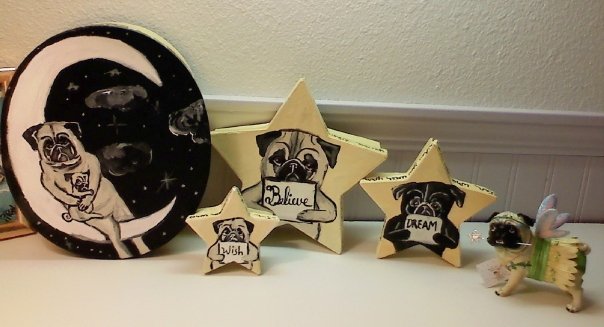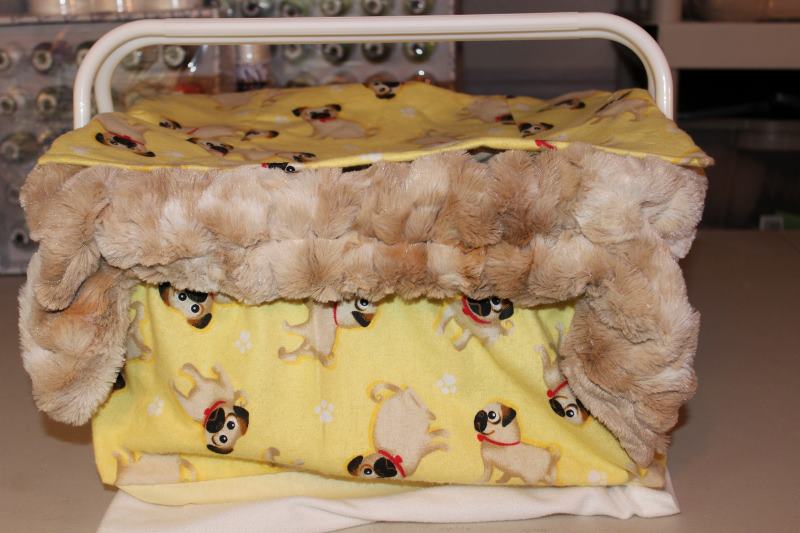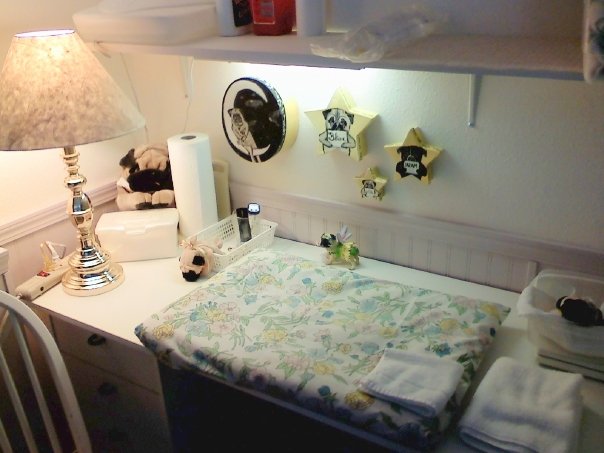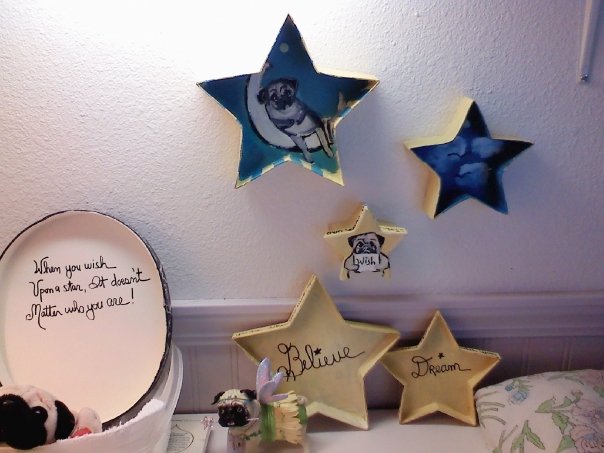Newborn Pugs
NEWBORN CARE
Now that you understand the importance of planning and learning how to whelp your new litter, we should talk about how to care for the new puppies.
Typically, 30% of all puppies die before being weaned. This might be acceptable to large commercial type breeders, but NOT acceptable if you understand you can reduce puppy death to less than 10% with proper care.
Approximately 10% of the pups born will have a birth defect that will cause it to die in spite of the best vet care available. This is very difficult to accept, but to be a breeder, you must.
The most common cause of neonatal death is premature separation of the placenta from the uterine wall, or a delayed passage down the birth canal, which causes the pup to suffocate from lack of oxygen before it is born and the sack opened. A perfectly formed little one that never takes a breath. This happened to me in my first litter.
My girl stopped having contractions after three of her five pups were delivered. She had to have a c-section to deliver the last two. It was too late for one of the two pups.
Another problem, puppies born with birth defects, seen or unseen. Some live for a few days, then quickly go downhill. Nothing works to bring them around, and even with expert care, they eventually pass away. The heartbreak of aspiration pneumonia, almost always fatal, and infections, viruses, etc., the list goes on.
As a responsible breeder, we learn as much as we can, do everything possible to give each pup a chance, but in the end we cannot control who lives and who dies. We can't "make" a puppy defect free, or fix what can't be undone.
Learning how to deal with these tragic losses, the emotional toll it takes, the exhaustion of going without sleep to ensure each precious baby gets a full tummy every 2 - 3 hours, or more often if one is small, weak, takes a toll. If you can't find a way to deal with these things, you shouldn't breed.
Being a breeder means rolling up your sleeves and doing some pretty gross stuff. If you can't do it with love, you shouldn't breed.
Caring for the newborn pups is usually done by leaving the mom and "mother nature" to raise the babies. That might work for some, but here we take the pro-active approach. Our babies are not left unattended with their moms, until after they've become old enough to regulate their body temperature (3 weeks of age) and are strong enough to get out from under mom if she sits or lays on them. (A typical Pug mom behavior.)
Newborn canines need warmth, hydration, and nutrition to sustain life and grow up into mature dogs. Pug moms are for the most part a bit clueless as to what and how to do what's necessary for their pups. Some will lay down and let them nurse, some will not step on or lay on them, some will lick them and clean their bottoms (newborns cannot urinate or defecate on their own, so must be stimulated to relieve themselves. If not, they will die).Some will cuddle them and keep track of each pup to ensure they're warm, but I've yet to meet a Pug girl that did it all. If they don't, it becomes your responsibility to provide this much needed care, or resign yourself to the pups dying from neglect.
Again, many books on the subject are available, and I can tell you most of them are adequate for a normal healthy litter, but don't address the needs of a Pug breeder with a mom that's clueless. All the care in the world will not save a defective puppy, but if a healthy puppy becomes chilled, or it doesn't get enough to drink from mom, it very quickly becomes a "sickly" pup. These pups are typically pushed away by a mom, and were always thought to be "defective" by breeders who gave their girls the intuitive ability to detect those unseen defects, but not so.
Once chilled, a pup stops processing their food. The food in the gut of the pup starts to ferment. This causes the pup to smell differently, and a pro-active dog mom will want it away from her other pups that smell good to her. It has nothing to do with the ability to detect internal defects.
Don't expect a Pug mom to be that intuitive, chilled or not, she probably will not worry about any individual pup. She'll lay down, or just sit, to feed them, only because having full teats gets uncomfortable, and she figures out quite fast those "smelly icky things" relieve that discomfort. She may even take to cleaning bottoms, either before she lets them eat, or after, and sometimes both, but she may not do an adequate job if left unobserved.
You must watch carefully to ensure each pup is going to the bathroom each time. If not, you can assist the babies with a cotton ball, or cosmetic pad, soaked with some baby oil to avoid chaffing.
If you aren't watching the pups closely you can miss changes in their poop, which if not corrected can lead to dehydration, or impacted intestines and puppy death. Every time the puppies are fed, you should be there to observe and make sure all are full and "pottied" afterwards. Also, you'll want to have a good kitchen scale on hand to weigh the pups at birth and once a day to know they are getting enough to eat.
Weight gain is an indication of a healthy pup. Weight loss means things need to change immediately to save the pup's life. Too much of a gain in too short a time, can also indicate a problem. If a puppy is too heavy for their non-calcified rib cage, they will become flat if they lay on a flat surface for too long. If this happens, you have a "swimmer" puppy and unless the condition is addressed, it can lead to death. You veterinarian can help you find the right treatment options.
I try to prevent flat chested pups, by using 4" egg crate foam inside my whelping box. It has also corrected already flat chested pups, so I swear by it and have helped other local breeders obtain their own foam padding.
I buy a twin mattress topper and cut it in half to fit a 3' x 3' puppy pen. I don't wash it, I cover it with waterproof underpads to prevent puppies from soiling it. My pups also learn as soon as they can walk how to use a litterbox (with newspaper pellets), so my foam pieces can be re-used.

Newborn Intensive Care
To learn more about the ways you can save a puppy in trouble, check out the books and products available by clicking on this link to my "Puppy Guru," Myra Savant-Harris' web site.
We also have some products available on our StarWalker page, that we use to care for newborns.
Single puppy litters have their own challenges.
Our portable baby box for transporting newborns to and from the vet's office.

We can put a heat source under the bottom.
A healthy litter.

See how nice and plump they look?
My Puppy care area in the nursery.


Copyright 2015 - 2023 WindWalker Pugs. All rights reserved.








